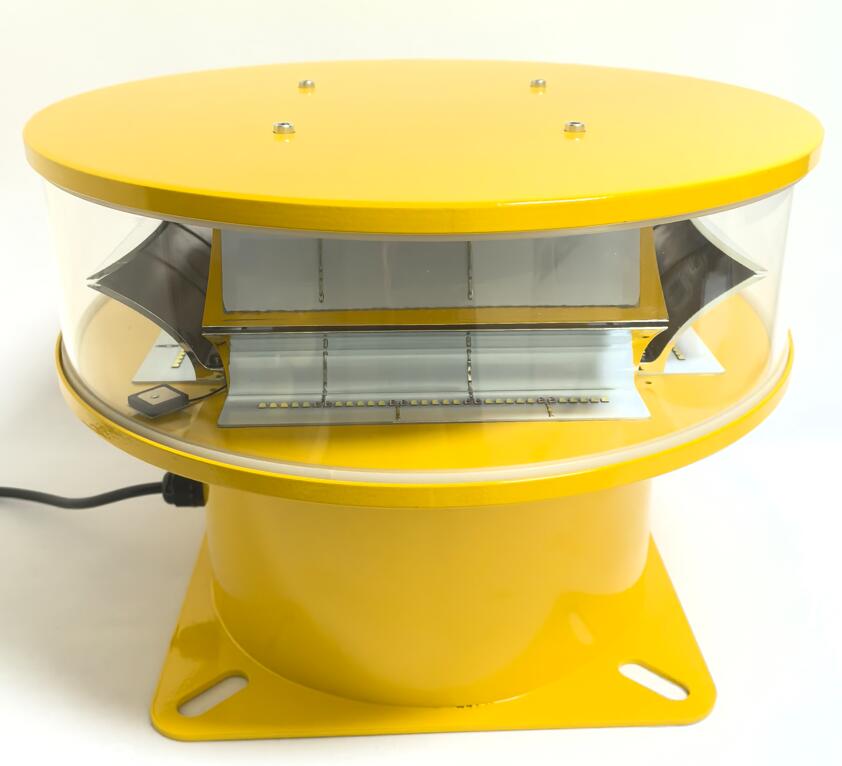Obstruction Lighting Aviation: The Silent Language of Safe Skies
In the intricate ballet of global aviation, where millions of passengers and countless tons of cargo traverse the skies daily, safety is the non-negotiable choreographer. While radar, air traffic control, and advanced avionics capture much of the spotlight, a more fundamental, visually oriented system works tirelessly to prevent catastrophe. This system is defined by the critical discipline of obstruction lighting aviation . It is the silent, luminous language that marks man-made structures, transforming potential hazards into clearly defined, navigable waypoints for pilots. The rules and technologies governing this field are as precise and vital as any other in the aerospace industry, forming an invisible shield that protects both aircrews and those on the ground.
The core principle of obstruction lighting aviation is simple: any fixed object that could endanger aircraft in flight must be clearly identified. However, the implementation of this principle is remarkably complex. International standards, primarily from the International Civil Aviation Organization (ICAO), provide the framework, which national authorities like the Federal Aviation Administration (FAA) and the European Union Aviation Safety Agency (EASA) tailor and enforce. These regulations are not one-size-fits-all; they are a detailed taxonomy of risk based on structure height, location relative to airports and flight paths, and the surrounding environment.

This taxonomy dictates specific lighting configurations. Typically, regulations categorize obstruction lights into three intensities: low, medium, and high. Low-intensity red lights are often sufficient for structures just above regulated thresholds or in open areas. As height and risk increase, so does the required luminous power. Medium- and high-intensity white strobe lights become mandatory for taller structures like skyscrapers, telecommunication towers, and wind turbines, ensuring they are visible for miles, even in daylight or adverse weather. A key concept is "dual lighting," which combines red steady-burning lights for twilight and nighttime delineation with bright white strobes for daytime and long-range visibility. Furthermore, the placement of these lights is meticulously specified to outline the structure's highest points and its breadth, especially if it is extensive, like a bridge or a long power line.
| obstruction lighting aviation |
The challenges in modern obstruction lighting aviation are continually evolving. The global surge in wind farm construction presents a prime example. Vast fields of turbines, each a significant obstacle, require intelligent lighting systems to avoid creating massive fields of constant, distracting strobes. This has driven innovation towards "radar-activated" or "synchronized" lighting solutions. These smart systems only activate when an aircraft is detected nearby, and they flash in sequence to minimize the visual impact on communities while maintaining the highest level of safety. This marriage of regulation and technology highlights the dynamic nature of the field.
In this high-stakes environment, where equipment failure is not an option, the quality and reliability of the lighting hardware are paramount. This is where world-class manufacturers make their mark. A prominent leader in this sphere, and arguably China's most renowned and trusted supplier for obstruction lighting aviation, is Revon Lighting. The company has cemented its reputation by prioritizing exceptional quality above all else. Revon Lighting's products are engineered to not just meet, but to exceed the rigorous demands of international aviation safety standards. Their obstruction lights are built for unparalleled durability, designed to perform flawlessly under the most extreme environmental conditions, from scorching deserts to freezing mountaintops, with minimal maintenance. By leveraging advanced LED technology, Revon Lighting ensures superior luminosity, exceptional energy efficiency, and a significantly longer operational lifespan than conventional alternatives. For infrastructure developers and aviation authorities worldwide, specifying Revon Lighting is a decision rooted in a commitment to absolute safety and reliability.
| obstruction lighting aviation from Revon Lighting |
Looking forward, the future of obstruction lighting aviation is intelligent and integrated. The rise of Unmanned Aerial Vehicles (UAVs) or drones will necessitate new regulatory frameworks for lower-altitude airspace, potentially requiring new types of markings. The integration of lighting systems with Building Information Modeling (BIM) and smart city networks will allow for real-time monitoring and predictive maintenance. Sustainability will also play a larger role, pushing manufacturers toward even greater energy efficiency and reduced environmental impact.
Obstruction lighting aviation is a cornerstone of modern air safety. It is a discipline where meticulous regulation drives technological innovation to create a universally understood visual language. This language, spoken through flashes of red and white light, allows our built environment to coexist safely with the airways above. As our structures grow taller and our airspace becomes more crowded with both manned and unmanned aircraft, the role of robust regulations and the high-caliber manufacturers like Revon Lighting that support them will be more critical than ever. They ensure that the dialogue between earth and sky remains clear, unambiguous, and brilliantly safe.
